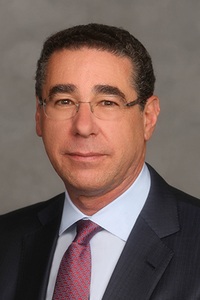De Caro & Kaplen partner Michael V. Kaplen, a three-term president of the Brain Injury Association of New York State, and professorial lecturer at law, teaching a course in brain injury law at the George Washington University Law School, dispels some of the common myths surrounding brain injury and concussions.
In discussing brain injury with the public and with professionals, I frequently need to correct misinformation and myths that make understanding of the TBI more difficult.
Today, I would like to discuss and dispel some of these misconceptions.
For each myth, I am including a link in the text accompanying this video for authoritative discussion of these important concepts.
Myth 1: A Concussion Is Not A Brain Injury: Not True
It has long been recognized by the Centers for Disease Control, The American Academy of Neurology, and other prestigious medical groups, that a concussion is a brain injury that can have life-long consequences. A concussion can result from a bump, jolt, or blow to the head. The signs and symptoms of a concussion are varied including physical, cognitive, emotional, and behavioral disturbances. The Centers of Disease Control’s website can provide detailed information: https://www.cdc.gov/traumaticbraininjury/get_the_facts.html
Myth 2: A CT Scan or an MRI Scan Can See a Brain Injury: Not True
Although CT Scans and MRI scans are useful for determining brain bleeds, skull fractures and pressure within the skull and brain cavities, these scans are not sensitive enough to detect microscopic damage to nerve fibers within the brain resulting in tears, strains, bruising of nerve cells and chemical reactions that often take place following brain trauma. It is not unusual for the CT scan or MRI study to be normal in a patient with TBI.
The fact that a CT scan or MRI is negative does not rule out a traumatic brain injury.
Absence of proof is not proof of absence is a saying used by medical professionals when they discuss the limitations of these tests to rule out brain injury.
American Society of Neuroradiology: https://www.asnr.org/patientinfo/conditions/tbi.shtml
Myth 3: To Be Diagnosed with a Concussion, There Must be a Loss of Consciousness: Not True
There is no need to lose consciousness to have sustained a concussion. A concussion can take place even without losing consciousness. Most concussions do not involve a loss of consciousness. The definition of a concussion includes being dazed or confused in the period immediately following the traumatic event. Some individuals may not remember all events immediately before or after the trauma.
American Association of Neurological Surgeons: https://www.aans.org/en/Patients/Neurosurgical-Conditions-and-Treatments/Concussion
Myth 4: You Need to Hit Your Head In order to Sustain a Brain Injury: Not True
You do not need to hit your head or have an object strike your head to sustain a brain injury.
You shake it, you break it is often said to describe the movement of the brain within the skull which can cause shearing, tearing, or stretching of nerve fibers. The inside of the skull contains many protrusions and sharp ridges which can cause damage to the soft and delicate brain fibers when the brain is thrust up against the interior of the skull.
Brain injury can also result from the rotational movement of the brain within the skull.
American Association of Neurological Surgeons:
https://www.aans.org/en/Patients/Neurosurgical-Conditions-and-Treatments/Concussion
Myth 5: Everyone Has a Good Recovery Following a Brain Injury: Not True
Brain injury of all types and severities can have long-term and even permanent consequences. Not everyone achieves a full recovery following a traumatic brain injury. The most recent and comprehensive studies have found symptoms of brain injury persist over a year following an injury.
Journal of Neurotrauma: https://www.liebertpub.com/doi/abs/10.1089/neu.2021.0348
Other comprehensive studies found an increased risk of developing
chronic cardiovascular, endocrine, neurological, and psychiatric disorders following brain trauma of any severity:
Journal of the American Medical Association: https://jamanetwork.com/journals/jamanetworkopen/article-abstract/2791599
I will return in future episodes of The Brain Injury Insider to discuss and dispel other frequent myths about brain injury.
About The Author
Michael V. Kaplen represents victims of vehicle collisions, unsafe buildings and construction sites, and medical malpractice, and is a preferred attorney of The Brain Injury Association of America.
Michael is board certified as a Civil Trial Advocate and board certified in medical malpractice litigation. He is a Professorial Lecturer in Law, The George Washington University Law School, The Legal Aspects of Traumatic Brain Injury.
Michael is past chairman of the American Association for Justice (AAJ) Automobile, Highway and Premise Liability Section, past chairman of the AAJ Traumatic Brain Injury Litigation Group, three term president of the Brain Injury Association of New York State served two terms as chair of the New York State Traumatic Brain Injury Services Coordinating Council and vice-president, New York State Academy of Trial Lawyers.
He was invited by President Obama to participate in the White House Healthy Kids & Safe Sports Concussion Summit.
He is admitted to courts in New York, Florida, and Washington, DC. He has been selected as a New York Super Lawyer and recognized by Best Lawyers of America and U.S. News and World Report in personal injury law.
